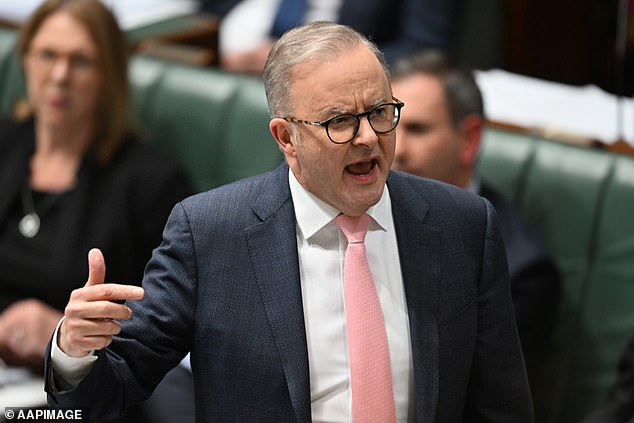Anthony Albanese’s plan to build 1.2 million homes from this week could trigger an insolvency crisis in the coming years, an expert fears.
Australia has a housing crisis as building approvals lag far behind immigration-driven population growth.
Local councils and state governments approved just 163,759 new dwellings in the year to May, new data from the Australian Bureau of Statistics showed.
But this figure is well below Labour’s target of building 240,000 homes a year for five years, starting on 1 July, as part of the Prime Minister’s goal of building 1.2 million homes.
Matthew Caddy, a Melbourne-based partner at McGrathNicol with more than 25 years’ experience handling corporate insolvencies, said artificially boosting apartment construction was more likely to trigger an insolvency crisis in the coming years.
“If the government focuses on a particular area, at a particular time, that can lead to a spike, but we also see that in the wake of those spikes, they are typically not managed well on the other side,” he told Daily Mail Australia.
“If you anticipate demand, you sometimes create it artificially; on the other hand, it is not uncommon to then see an abnormal amount of insolvencies.”
The low level of building approvals has also been caused by 487,820 migrants moving to Australia in the year to April, leaving a shortfall of 78,422 homes – a figure based on households with an average of 2.5 people.
Anthony Albanese’s plan to build 240,000 homes a year from this week could trigger an insolvency crisis in the coming years, a source close to the project fears (pictured are apartments under construction in Sydney)
Despite the housing shortage, apartment developers in particular are struggling: construction companies now account for more than a quarter of failed businesses in Australia.
“Many feasibility projects are not profitable, which has led to a slowdown in construction activity,” Caddy said.
‘Most insolvencies in the construction sector relate to higher-density construction projects, rather than land and building developments.
“In these projects, margins are very tight and when there is reduced demand, everyone competes for what is available and that further reduces margins.”
Although Australia has a housing shortage, Australians increasingly want to live in a house with a backyard rather than a cramped, high-rise apartment.
“At the customer level, in terms of buyer demand, that’s a moderate thing,” Caddy said.
While investors have traditionally favored one- and two-bedroom units, they have been lukewarm on larger, three-bedroom apartments.
“A lot of apartment buildings are built as investment stock: one-bedroom apartments, two-bedroom apartments,” Caddy said.
‘There were a lot of apartment complexes being built that were more focused on owner occupiers, people who wanted to downsize and were more focused on selling into the three-bedroom market, which is not strong at all for investors and then the demand for those, certainly in the last 24 months, has dropped significantly.’
Construction was by far the hardest hit sector in Australia, with 2,832 companies filing for bankruptcy during the year to June 16, an increase of 33.7 percent, data from the Australian Securities and Investments Commission showed.

The federal government has pledged $9.3 billion to help states and territories meet the target of building 1.2 million homes in the five years to 2029.
Fixed-price contracts and rising building materials costs are crippling builders, even though Australia has a housing shortage due to record levels of immigration.
The federal government has pledged $3 billion to states and territories to help meet the target of building 1.2 million homes in the five years to 2029.
Housing Minister Julie Collins argued that building more homes was the best way to plan for population growth.
“Building more homes is the best way to address Australia’s housing challenges,” he said.
Mr Caddy criticised both sides of politics, noting that former Prime Minister Scott Morrison’s HomeBuilder program, which provided $15,000 grants during the pandemic in 2020, had also caused a spike in construction insolvencies after the program ended.


